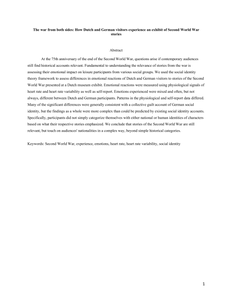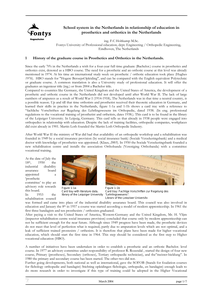At the 75th anniversary of the end of the Second World War, questions arise if contemporary audiences still find historical accounts relevant. Fundamental to understanding the relevance of stories from the war is assessing their emotional impact on leisure participants from various social groups. We used the social identity theory framework to assess differences in emotional reactions of Dutch and German visitors to stories of the Second World War presented at a Dutch museum exhibit. Emotional reactions were measured using physiological signals of heart rate and heart rate variability as well as self-report. Emotions experienced were mixed and often, but not always, different between Dutch and German participants. Patterns in the physiological and self-report data differed. Many of the significant differences were generally consistent with a collective guilt account of German social identity, but the findings as a whole were more complex than could be predicted by existing social identity accounts. Specifically, participants did not simply categorize themselves with either national or human identities of characters based on what their respective stories emphasized. We conclude that stories of the Second World War are still relevant, but touch on audiences’ nationalities in a complex way, beyond simple historical categories.
DOCUMENT

This paper explains the history of the graduate course in prosthetics and orthotics in the Netherlands. It also explains the schoolstystem in relationship towards vocational education and postgraduate education.
DOCUMENT

This paper deals with the complexity of doing research in design practice. More and more projects and papers appear dealing with this topic and the time has come to draw up the balance sheet. This paper starts with explaining the status of design research until now, in which we indicate the challenges to overcome to become a mature research field. We discuss nine issues which are - according to our experience - important to overcome. Within each issue we indicate the problem that we encounter (or have seen being encountered) while executing design research in practice. For each problem we propose a solution that fit both to the quality standards and methodology of scientific research and to the quality standards required in daily design practice.
DOCUMENT
